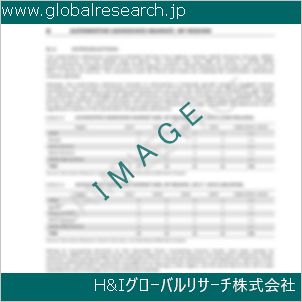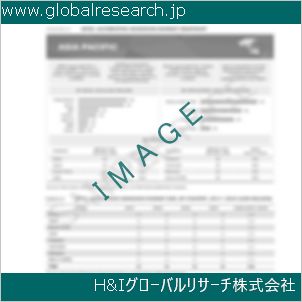Table of Contents
1 Industry Overview of Hydrogenfluoride
1.1 Definition and Specifications of Hydrogenfluoride
1.1.1 Definition of Hydrogenfluoride
1.1.2 Specifications of Hydrogenfluoride
1.2 Classification of Hydrogenfluoride
1.3 Applications of Hydrogenfluoride
1.3.1 Nuclear Application
1.3.2 Non-Nuclear Application
1.4 Industry Chain Structure of Hydrogenfluoride
1.5 Industry Overview and Major Regions Status of Hydrogenfluoride
1.5.1 Industry Overview of Hydrogenfluoride
1.5.2 Global Major Regions Status of Hydrogenfluoride
1.6 Industry Policy Analysis of Hydrogenfluoride
1.7 Industry News Analysis of Hydrogenfluoride
2 Manufacturing Cost Structure Analysis of Hydrogenfluoride
2.1 Raw Material Suppliers and Price Analysis of Hydrogenfluoride
2.2 Equipment Suppliers and Price Analysis of Hydrogenfluoride
2.3 Labor Cost Analysis of Hydrogenfluoride
2.4 Other Costs Analysis of Hydrogenfluoride
2.5 Manufacturing Cost Structure Analysis of Hydrogenfluoride
2.6 Manufacturing Process Analysis of Hydrogenfluoride
3 Technical Data and Manufacturing Plants Analysis of Hydrogenfluoride
3.1 Capacity and Commercial Production Date of Global Hydrogenfluoride Major Manufacturers in 2023
3.2 Manufacturing Plants Distribution of Global Hydrogenfluoride Major Manufacturers in 2023
3.3 R&D Status and Technology Source of Global Hydrogenfluoride Major Manufacturers in 2023
3.4 Raw Materials Sources Analysis of Global Hydrogenfluoride Major Manufacturers in 2023
4 Capacity, Production and Revenue Analysis of Hydrogenfluoride by Regions, Types and Manufacturers
4.1 Global Capacity, Production and Revenue of Hydrogenfluoride by Regions 2019-2024
4.2 Global and Major Regions Capacity, Production, Revenue and Growth Rate of Hydrogenfluoride 2019-2024
4.3 Global Capacity, Production and Revenue of Hydrogenfluoride by Types 2019-2024
4.4 Global Capacity, Production and Revenue of Hydrogenfluoride by Manufacturers 2019-2024
5 Price, Cost, Gross and Gross Margin Analysis of Hydrogenfluoride by Regions, Types and Manufacturers
5.1 Price, Cost, Gross and Gross Margin Analysis of Hydrogenfluoride by Regions 2019-2024
5.2 Price, Cost, Gross and Gross Margin Analysis of Hydrogenfluoride by Types 2019-2024
5.3 Price, Cost, Gross and Gross Margin Analysis of Hydrogenfluoride by Manufacturers 2019-2024
6 Consumption Volume, Consumption Value and Sale Price Analysis of Hydrogenfluoride by Regions, Types and Applications
6.1 Global Consumption Volume and Consumption Value of Hydrogenfluoride by Regions 2019-2024
6.2 Global and Major Regions Consumption Volume, Consumption Value and Growth Rate of Hydrogenfluoride 2019-2024
6.3 Global Consumption Volume and Consumption Value of Hydrogenfluoride by Types 2019-2024
6.4 Global Consumption Volume and Consumption Value of Hydrogenfluoride by Applications 2019-2024
6.5 Sale Price of Hydrogenfluoride by Regions 2019-2024
6.6 Sale Price of Hydrogenfluoride by Types 2019-2024
6.7 Sale Price of Hydrogenfluoride by Applications 2019-2024
6.8 Market Share Analysis of Hydrogenfluoride by Different Sale Price Levels
7 Supply, Import, Export and Consumption Analysis of Hydrogenfluoride
7.1 Supply, Consumption and Gap of Hydrogenfluoride 2019-2024
7.2 Global Capacity, Production, Price, Cost, Revenue, Supply, Import, Export and Consumption of Hydrogenfluoride 2019-2024
7.3 USA Capacity, Production, Price, Cost, Revenue, Supply, Import, Export and Consumption of Hydrogenfluoride 2019-2024
7.4 EU Capacity, Production, Price, Cost, Revenue, Supply, Import, Export and Consumption of Hydrogenfluoride 2019-2024
7.5 China Capacity, Production, Price, Cost, Revenue, Supply, Import, Export and Consumption of Hydrogenfluoride 2019-2024
7.6 Japan Capacity, Production, Price, Cost, Revenue, Supply, Import, Export and Consumption of Hydrogenfluoride 2019-2024
8 Major Manufacturers Analysis of Hydrogenfluoride
8.1 Manufacturer One
8.1.1 Company Profile
8.1.2 Product Picture and Specifications
8.1.2.1 Type I
8.1.2.2 Type II
8.1.2.3 Type III
8.1.3 Capacity, Production, Price, Cost, Gross and Revenue
8.1.4 Contact Information
8.2 Manufacturer Two
8.2.1 Company Profile
8.2.2 Product Picture and Specifications
8.2.2.1 Type I
8.2.2.2 Type II
8.2.2.3 Type III
8.2.3 Capacity, Production, Price, Cost, Gross and Revenue
8.2.4 Contact Information
8.3 Manufacturer Three
8.3.1 Company Profile
8.3.2 Product Picture and Specifications
8.3.2.1 Type I
8.3.2.2 Type II
8.3.2.3 Type III
8.3.3 Capacity, Production, Price, Cost, Gross and Revenue
8.3.4 Contact Information
8.4 Manufacturer Four
8.4.1 Company Profile
8.4.2 Product Picture and Specifications
8.4.2.1 Type I
8.4.2.2 Type II
8.4.2.3 Type III
8.4.3 Capacity, Production, Price, Cost, Gross and Revenue
8.4.4 Contact Information
8.5 Manufacturer Five
8.5.1 Company Profile
8.5.2 Product Picture and Specifications
8.5.2.1 Type I
8.5.2.2 Type II
8.5.2.3 Type III
8.5.3 Capacity, Production, Price, Cost, Gross and Revenue
8.5.4 Contact Information
…
9 Marketing Trader or Distributor Analysis of Hydrogenfluoride
9.1 Marketing Channels Status of Hydrogenfluoride
9.2 Traders or Distributors with Contact Information of Hydrogenfluoride by Regions
9.3 Ex-work Price, Channel Price and End Buyer Price Analysis of Hydrogenfluoride
9.4 Regional Import, Export and Trade Analysis of Hydrogenfluoride
10 Industry Chain Analysis of Hydrogenfluoride
10.1 Upstream Major Raw Materials Suppliers Analysis of Hydrogenfluoride
10.1.1 Major Raw Materials Suppliers with Contact Information Analysis of Hydrogenfluoride
10.1.2 Major Raw Materials Suppliers with Supply Volume Analysis of Hydrogenfluoride by Regions
10.2 Upstream Major Equipment Suppliers Analysis of Hydrogenfluoride
10.2.1 Major Equipment Suppliers with Contact Information Analysis of Hydrogenfluoride
10.2.2 Major Equipment Suppliers with Product Pictures Analysis of Hydrogenfluoride by Regions
10.3 Downstream Major Consumers Analysis of Hydrogenfluoride
10.3.1 Major Consumers with Contact Information Analysis of Hydrogenfluoride
10.3.2 Major Consumers with Consumption Volume Analysis of Hydrogenfluoride by Regions
10.4 Supply Chain Relationship Analysis of Hydrogenfluoride
11 Development Trend of Analysis of Hydrogenfluoride
11.1 Capacity, Production and Revenue Forecast of Hydrogenfluoride by Regions and Types
11.1.1 Global Capacity, Production and Revenue of Hydrogenfluoride by Regions 2024-2029
11.1.2 Global and Major Regions Capacity, Production, Revenue and Growth Rate of Hydrogenfluoride 2024-2029
11.1.3 Global Capacity, Production and Revenue of Hydrogenfluoride by Types 2024-2029
11.2 Consumption Volume and Consumption Value Forecast of Hydrogenfluoride by Regions, Types and Applications
11.2.1 Global Consumption Volume and Consumption Value of Hydrogenfluoride by Regions 2024-2029
11.2.2 Global and Major Regions Consumption Volume, Consumption Value and Growth Rate of Hydrogenfluoride 2024-2029
11.2.3 Global Consumption Volume and Consumption Value of Hydrogenfluoride by Types 2024-2029
11.2.4 Global Consumption Volume and Consumption Value of Hydrogenfluoride by Applications 2024-2029
11.3 Supply, Import, Export and Consumption Forecast of Hydrogenfluoride
11.3.1 Supply, Consumption and Gap of Hydrogenfluoride 2024-2029
11.3.2 Global Capacity, Production, Price, Cost, Revenue, Supply, Import, Export and Consumption of Hydrogenfluoride 2024-2029
11.3.3 USA Capacity, Production, Price, Cost, Revenue, Supply, Import, Export and Consumption of Hydrogenfluoride 2024-2029
11.3.4 EU Capacity, Production, Price, Cost, Revenue, Supply, Import, Export and Consumption of Hydrogenfluoride 2024-2029
11.3.5 China Capacity, Production, Price, Cost, Revenue, Supply, Import, Export and Consumption of Hydrogenfluoride 2024-2029
11.3.6 Japan Capacity, Production, Price, Cost, Revenue, Supply, Import, Export and Consumption of Hydrogenfluoride 2024-2029
12 New Project Investment Feasibility Analysis of Hydrogenfluoride
12.1 New Project SWOT Analysis of Hydrogenfluoride
12.2 New Project Investment Feasibility Analysis of Hydrogenfluoride
13 Conclusion of the Global Hydrogenfluoride (CAS 7664-39-3) Industry 2024 Market Research Report
| ※参考情報 フッ化水素についてお話しします。フッ化水素(Hydrogen fluoride)は、化学式 HF で表され、CAS 登録番号は 7664-39-3 です。フッ化水素は無色の気体であり、特有の刺すような匂いを持ち、非常に腐食性のある物質です。水に非常に溶けやすく、水溶液はフッ化水素酸(HF酸)と呼ばれ、強力な酸であるため、取り扱いには十分な注意が必要です。 フッ化水素は、化学的に非常に活性な物質で、多くの金属と反応し、特に石英やシリカを攻撃します。これは、フッ化水素がシリコンと強い結合を形成するため、シリカやガラスを溶解する性質があるためです。この特徴により、フッ化水素は様々な産業分野で利用されています。 フッ化水素の主な用途としては、半導体製造やフッ素化合物の合成が挙げられます。特に、半導体工業では、シリコンウエハーのエッチングプロセスにおいて、フッ化水素が重要な役割を果たします。シリコンウエハーの表面を精密に加工するために、フッ化水素が利用されます。この過程では、ウエハーの不純物を取り除き、微細な回路を形成するための基盤が作られます。 また、フッ化水素はさまざまなフッ素化合物の合成に用いられます。化学反応において、フッ化水素はフッ素原子を付加するための供給源となり、フッ素系ポリマーや医薬品、農薬などの製造に貢献しています。フッ素化合物は、耐熱性や耐薬品性に優れた特性を持つため、さまざまな技術分野で需要があります。 フッ化水素は、固体状態でも存在し、フッ化水素の氷(氷HN)という特定の結晶構造を有しています。固体状態のフッ化水素は、通常の条件下では非常に不安定で、容易に気体に変化します。これは、フッ化水素が分子間の結合が弱いためであり、熱エネルギーによって分子が自由に動くことができるためです。 フッ化水素の取り扱いには、様々な注意が必要です。劇薬として分類されるため、取り扱う際には適切な防護具(手袋、マスク、保護眼鏡など)を着用し、特に換気の良い環境で作業することが重要です。フッ化水素は皮膚や粘膜に対して非常に危険であり、接触すると深刻な化学火傷を引き起こす可能性があります。また、水と反応して酸を生成しますが、酸が皮膚に付着すると、フッ化物イオンが組織に吸収され、非常に危険な状態を引き起こすことがあります。このため、フッ化水素に関する適切な教育と訓練を受けることが必要です。 さらに、フッ化水素は環境に対しても影響を与える可能性があります。万が一、フッ化水素が環境中に漏れ出した場合は、周辺の生態系に対する悪影響が懸念されます。したがって、フッ化水素を取り扱う施設では、厳格な規制や基準が設定されており、漏洩や事故を防ぐための対策が求められています。 研究分野においても、フッ化水素は重要な化合物であり、さまざまな反応の基点として利用されています。特に、フッ化水素は有機化学において新しい反応経路の開発や新規化合物の合成に貢献しています。また、フッ化水素を用いた触媒反応や反応性フッ素化試薬の研究も進んでいます。 フッ化水素は、フッ素化合物の中でも重要な位置を占める化学物質であり、その特性と用途はさまざまです。半導体産業から新しい化学反応の開発に至るまで、幅広い分野で利用されています。しかし、その取り扱いは危険を伴うため、安全に扱うための教育と知識が不可欠です。フッ化水素に関する適切な情報と技術が、今後の産業発展と社会の安全に寄与することが期待されます。 |
❖ 免責事項 ❖
http://www.globalresearch.jp/disclaimer












